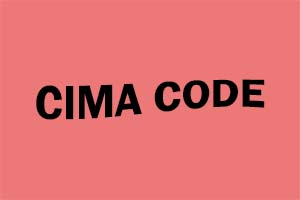The CIMA Code
 The CIMA Code, cornerstone of the sectoral integration project, coming into force in 1995, applies to all insurance companies operating in the 14 African member states. It regulates local insurers and branches of foreign insurers domiciled in the region in standardized fashion.
The CIMA Code, cornerstone of the sectoral integration project, coming into force in 1995, applies to all insurance companies operating in the 14 African member states. It regulates local insurers and branches of foreign insurers domiciled in the region in standardized fashion.
The CIMA Code comprises 9 books:
- Book I: The insurance contract
- Book II: Compulsory insurance plans
- Book III: Insurance companies
- Book IV: Accounting rules applicable to insurance companies
- Book V: Provisions pertaining to general agents, brokers and other insurance and capitalization intermediaries
- Book VI: Special insurance bodies
- Book VII: Microinsurance
- Book VIII: Reinsurance
- Book IX: Takaful insurance
The initial legal framework has been subject to several updates and amendments with the introduction of modifications aimed at adapting the regulations to the socio-economic environment, strengthening the legislation, increasing the retention capacity of insurers, improving the solvency of companies, and protecting the insured.
Several provisions and articles of the CIMA Code have profoundly reformed the region's insurance landscape. These provisions include:
- In Article 13, the reforms introduced by the ministers of the organization's member countries at their 11 April 2011 meeting in N'Djamena are designed to put an end to a situation that threatens the very existence of insurers. Consequently, the new Article 13, introduced in 2011 and amended in 2014, now requires the payment of premiums to the insurer before the entry into force of the policy (Cash Before Cover) and before the renewal of coverage. This measure is introduced to address the significant level of outstanding premiums on the balance sheets of insurance companies at the time.
- Similar to Article 13 in 2011 for premium payments, Article 312 introduces binding measures on insurance companies in 2012 with regard to claims payments. Henceforth, the Insurance Code, in Article 312, amended in 2018, imposes sanctions on companies that delay paying compensation without justification.
- Book VII, adopted in 2012, governing the activity of microinsurance to cover low-income populations.
- Book VIII, adopted in 2015, governing the reinsurance business. This regulation is binding on all reinsurance companies established in the CIMA zone including foreign branches, representative or liaison offices.
- Article 308, amended in 2000 and 2016, governing and limiting reinsurance cessions by local companies outside the CIMA zone.
- Articles 329-3 and 330-2, amended in 2016, 2018, and 2020, increasing the minimum share capital of joint stock insurance companies and the establishment fund of mutual insurance companies.
- Book IX, enacted in 2019, governing the business of Takaful insurance.
These regulatory reforms and consolidation measures resulted in a significant improvement in key market indicators. From 1995 to 2020, the CIMA zone's turnover has, in original currency, increased by 498%, that is, an average annual increase of nearly 20% over 25 years.
Another success pertains to the number of insurance companies under CIMA's control which has almost doubled, from 92 in 1995 to 177 in 2020.
